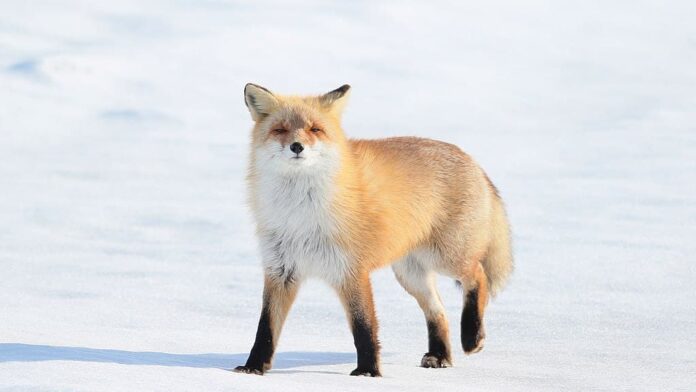It is obvious that everything in Japan screams Kawaii, and that is true. We are talking about cute animals in Japan that will totally melt your heart. The cute animals that you are about to see are so adorable, and I also included some information about them as well. Let’s take a look and see which cute animals in Japan on the list below that you find the most adorable.
1Hokkaido Long-Tailed Tit
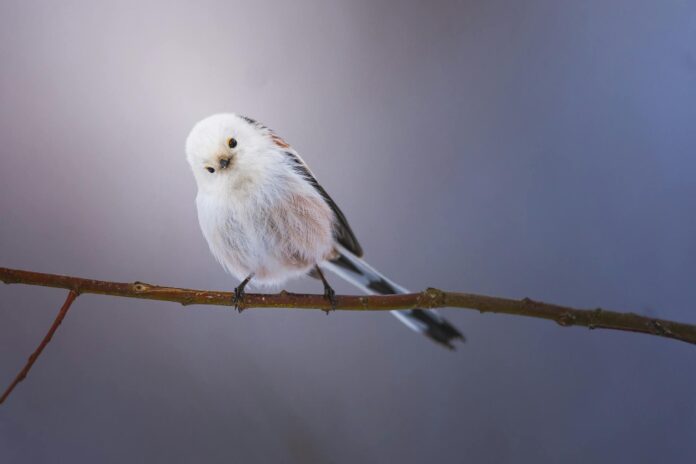
If this is not cute, I don’t know what else is. The Hokkaido long-tailed tit is literally a snowball with wings, no doubt why they are called snow fairies. It has a white face and a tiny beak with round eyes, this little bird looks great from every angle. While long-tailed tits have distinct black eyebrows, the ones in Hokkaido lose their eyebrows when they mature. And if you look closer, you will also see the yellow or pink eyelids; what a beauty, right? A Hokkaido long-tailed tit is only around 14 centimeters long, and half the length is its long tail.
You can probably tell by the name, these fluff balls are from Hokkaido. And if you ever go there, there are plenty of souvenirs that you can bring back home to remember these adorable birds. Their appearance is not the only cute thing, their behavior is even more heart-melting. These winged pom-poms are social birds, and they form flocks of up to 20 birds to keep each other warm. With many members, they won’t get too cold while roosting during winter months. They also forage in the same group, feeding on aphids, small insects, and spiders.
Fun Fact: If a pair of birds loses their eggs, the pair will help other birds to raise their chicks. That includes building nests, finding food, and protecting them from predators.
2Japanese Dwarf Flying Squirrel
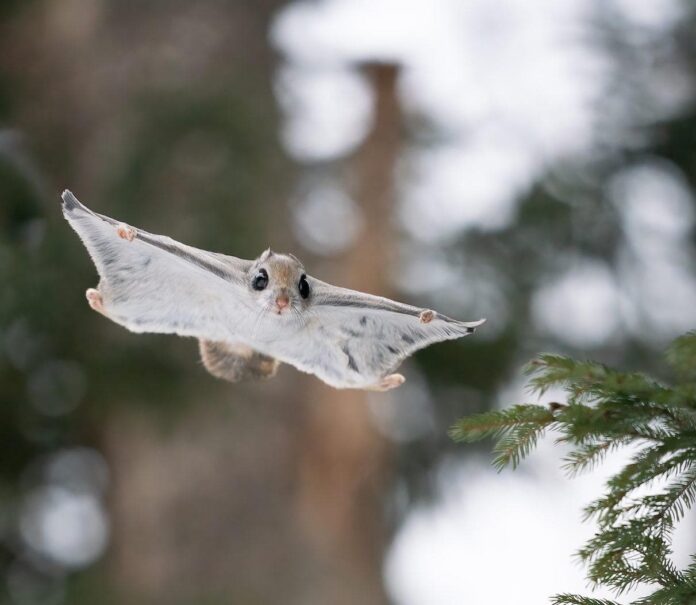
Squirrels are already adorable in general but the cuteness is at another level with Japanese dwarf flying squirrels. At the size of 14 to 20 centimeters, this little fluff ball is like a mini plushy to cuddle. Not to be confused with the Siberian flying squirrels that have a gray coat all over, this one is not that. A Japanese dwarf flying squirrel has gray-brown fur at the back and white fur around its belly. The cutest part? Definitely those large eyes that cover most of its face, it looks so unreal but so cute. Unlike the name, these squirrels cannot fly but they have the ability to glide. The unique skin membrane joining their ankles and wrists that they possess allows them to glide from one tree to another. They are nocturnal so they hide during the day and only come out at dusk.
The distribution of this kawaii squirrel is in forests across Honshu, Kyushu, and Shikoku Islands in Japan. As tree dwellers, these squirrels inhabit areas where trees are abundant such as boreal-evergreen forests and sub-alpine forests. They build their nests in holes in tree trunks or at cross points between branches and tree trunks using lichens and mosses. Their favorite habitats are conifers like pine and spruce where food sources are good and shelters are proper. Speaking of food, Japanese dwarf flying squirrels are herbivores and they feed on buds, fruits, nuts, pines, seeds, and occasionally insects.
Fun Fact: Japanese dwarf flying squirrels glow bright pink under ultraviolet light while flying.
3Japanese Marten

Is it me or all cute animals in Japan are just so fluffy? Would you at this Japanese marten here? The body of the marten itself is only 50 centimeters but its tail is another 20 centimeters long. As you can see, it has a smooth coat of dull yellow with a cream or white face. The bright orange fur is only in winter, their coats become darker and their faces turn black in the summer. Don’t let the cute face fool you, martens are agile predators with sharp teeth and strong jaws. Though not aggressive, it is still not advisable to mess with one.
The Japanese marten is the marten species endemic to Japan, living in boreal forests across the country’s mainland. They are solitary and territorial animals that use scents to make their territory, and they only come together to mate. Females have the special ability to keep the embryos for almost a year after mating in case living conditions are not favorable. Japanese martens live in boreal forests where food is abundant. Martens are also arboreal animals, they have wide hands and feet with sharp claws for tree climbing. Their menu consists of omnivorous diet such as fish, frogs, insects, mammals, and small birds as well as fruit and seeds. Unfortunately, their population is being threatened by the logging industry which destroys their habitats greatly.
Fun Fact: A group of martens, although rare, is called a “richness” or “richesse”.
4Japanese Serow

Looking rather elegant, the Japanese serow definitely belongs to the list of cute animals in Japan. That fluffy tail and soft fur with an innocent facial expression is a great combination of grace. A Japanese serow is around 81 centimeters tall, and both males and females have 12 to 16 centimeters backward-curving horns. It has black, dark brown, or whitish fur with white fur around the neck. Their special feature is the strong legs and hooves that allow them to sprint up mountains and jump from cliff to cliff.
The Japanese serow is an even-toed ungulate endemic to Japan, residing on Honshu, Kyushu, and Shikoku Islands. Not different from other serows out there, this one also lives in dense mountain forests and woodlands. They are quite territorial, and they mark their territory using sweet and sour-smelling preorbital gland secretions. These ungulates are diurnal so they are active in the early mornings and late afternoons, spending time feeding on acorns, leaves, and shoots. More than that, Japanese serows have excellent eyesight and hearing so they can detect movement from afar. Not to mention the strong sense of smell, they need those to stay away from their only predators, the Japanese black bears. Too bad, humans are also their main predators and poaching remains one of their threats.
Fun Fact: Japanese serow is a national symbol of Japan, and they are under protection in conservation areas.
5Sakhalin Fox
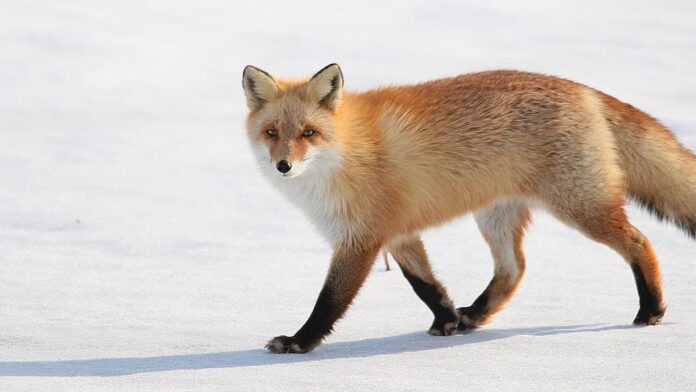
If you ask about cute animals in Japan, the Sakhalin fox will be one of the answers. The actual name is Ezo red fox or formally “kitakitsune” in Japanese. Not different from other foxes, the color of the Sakhalin foxes is orange-brown but they have black ear liners and limbs. An Ezo red fox has fluffy fur that looks both elegant and graceful in winter. This beautiful fur will be shed in summer, and their beauty also goes away because their fur sheds unevenly. That mischievous face is just so hard to resist but it is best to keep the distance from them. Sakhalin foxes are definitive hosts to a parasite called Echinococcus which is a type of tapeworm.
There is an entire island where their population is abundant, and that is Sakhalin Island; hence their name. However, you can also find this adorable trickster on Hokkaido and Kuril Islands as well as surrounding islands of Japan. The range of Ezo red fox is from alpine belts to grassland in Hokkaido but also common in urban areas. In some urban areas, they are not afraid of humans and they actually approach humans, especially tourists for food. Their main diet consists of birds, insects, mountain hares, and rats as well as fruits and nuts. It is common to see them in pairs, and it is the cutest thing ever when they playfully chase each other.
Fun Fact: Each Ezo red fox has its own personality, and they have different fur coloration and patterns.
6Snow Monkey
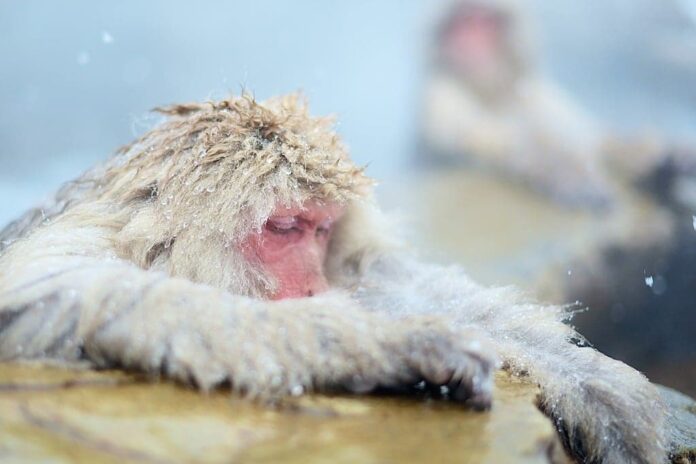
The Japanese macaque aka snow monkey has way more luxurious life than many of us out here. I mean, what can be better than chilling and grooming in the hot bath all day with your friends in winter? And this is exactly the life our snow monkeys here are living. The first thing anyone immediately notices is that carefree and chilling pinkish face that they have. Apart from the fascinating facial expression, the rest of its body is covered in brown or grayish hair. A snow monkey’s coat is very thick which helps keep it warm on top of the hot spring it takes. This thick coat alone allows them to cope with temperatures as low as -20 degrees Celsius. Outside the bath, males spend their time on the grounds while females are up in the trees.
The snow monkeys that you often see in pictures are the ones from Nagano, a prefecture with so many nice things. This mountainous and snowy area has a lot to offer from hot springs and great food to world-class skiing, snowboarding, and more. Nagano is also home to the Jigokudani Snow Monkey Park, where snow covers the region almost one-third of the year. This troop of Japanese macaques has been soaking in the hot springs of the park since 1964. A troop can be up to 70 individuals, and they are all feed, groom, and travel together. These macaques’ diet varies depending on where they live but they are omnivorous, so they eat many things. Their common food includes barks, fallen seeds, fish, fruits, herbs, insects, mature leaves, and nuts.
Fun Fact: The snow monkeys began to stay in the hot spring after one monkey enjoyed the warm water when it fetched a fallen apple in there.
7Tsushima Cat
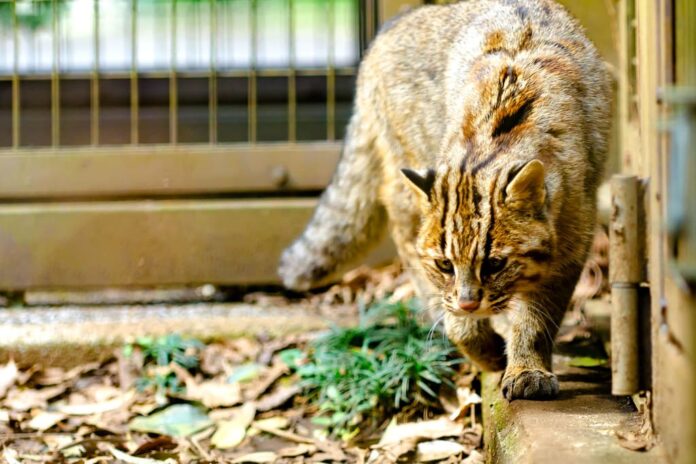
Cats are one of the cutest animals that we love, and this one has its own endearing features to be adorable. Looks like a domestic cat but wilder, a Tsushima cat is chestnut-brown to cream in color with indistinct brown spots. These cats are plump in winter, and they become slim in winter. You can tell the difference by the two brown and white stripes on its forehead and its long fat tail. At the same time, it has long legs and well-defined webs between its toes for swimming.
Just like the name suggests, the Tsushima cats come from the Tsushima islands in Nagasaki prefecture. They inhabit bamboo forests, cultivated areas, forest edges, glossy-leaved forests, mountain slopes, streams, and watersides where they feed on mice. Alongside that, birds, hares, insects, and tree shrews, are among their favorite meals in the summer months. They are solitary, and they only come to meet each other during the breeding season. This small wild cat is actually native to East Asia, South Asia, and Southeast Asia. It is actually critically endangered in Japan whose population declines due to habitat degradation and road kills.
Fun Fact: There are only around 100 individuals these days, and Tsushima is the last wildcat species in Japan.
8White Ermine
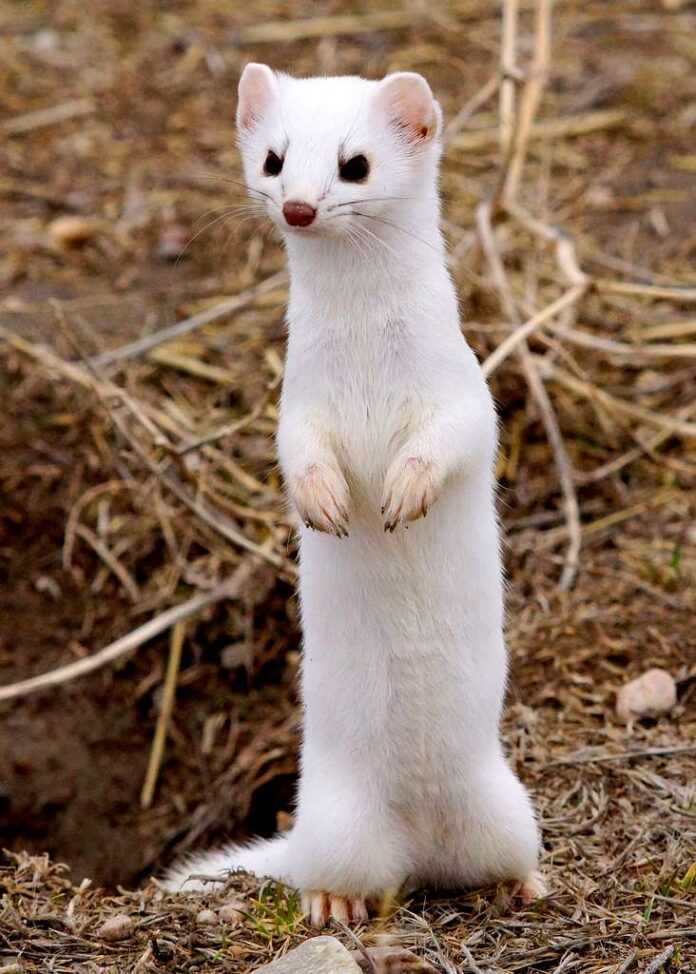
Not be confused with the white ermine moth with the same name, this fluffy cutie right here is a stoat. A white ermine has a long neck, slender body with an orange-brown fur coat, and darker markings on its head in summer. It molds twice a year, and the northern species is completely white in winter. Its winter fur is very dense and silky but its summer fur is rough, short, and sparse. The tail is long while the legs are short but are equipped with sharp claws. However, the cutest and most graceful part is that little face with round black eyes that capture everyone’s hearts. Not to mention the long brown or white whiskers and short rounded ears, the cuteness is just overload.
A white ermine is a weasel species native to Japan, living on the islands of Honshu, Kyushu, and Shikoku. It has also been introduced to Hokkaido and Ryukyu Islands to control rodents, and to Sakhalin Island in Russia. At the same time, it also has a wide distribution across the Arctic, Asia, Europe, and North America. These weasels live in alpine meadows, marshes, open areas near forests or shrub borders, riparian woodlands, and shrubby fencerows. Their habitats are full of their favorite food such as insects, mice, reptiles, small vertebrates, voles, and other small mammals. Across, people hunt them for their pelts to use in trim coats and other clothing. Clear-cut logging and climate change also affect their population greatly as well.
Fun Fact: Ermines use their teeth to ferociously kill their small prey by piercing the brain and the back of its neck.
Related Post: Cute Animals With Big Ears

